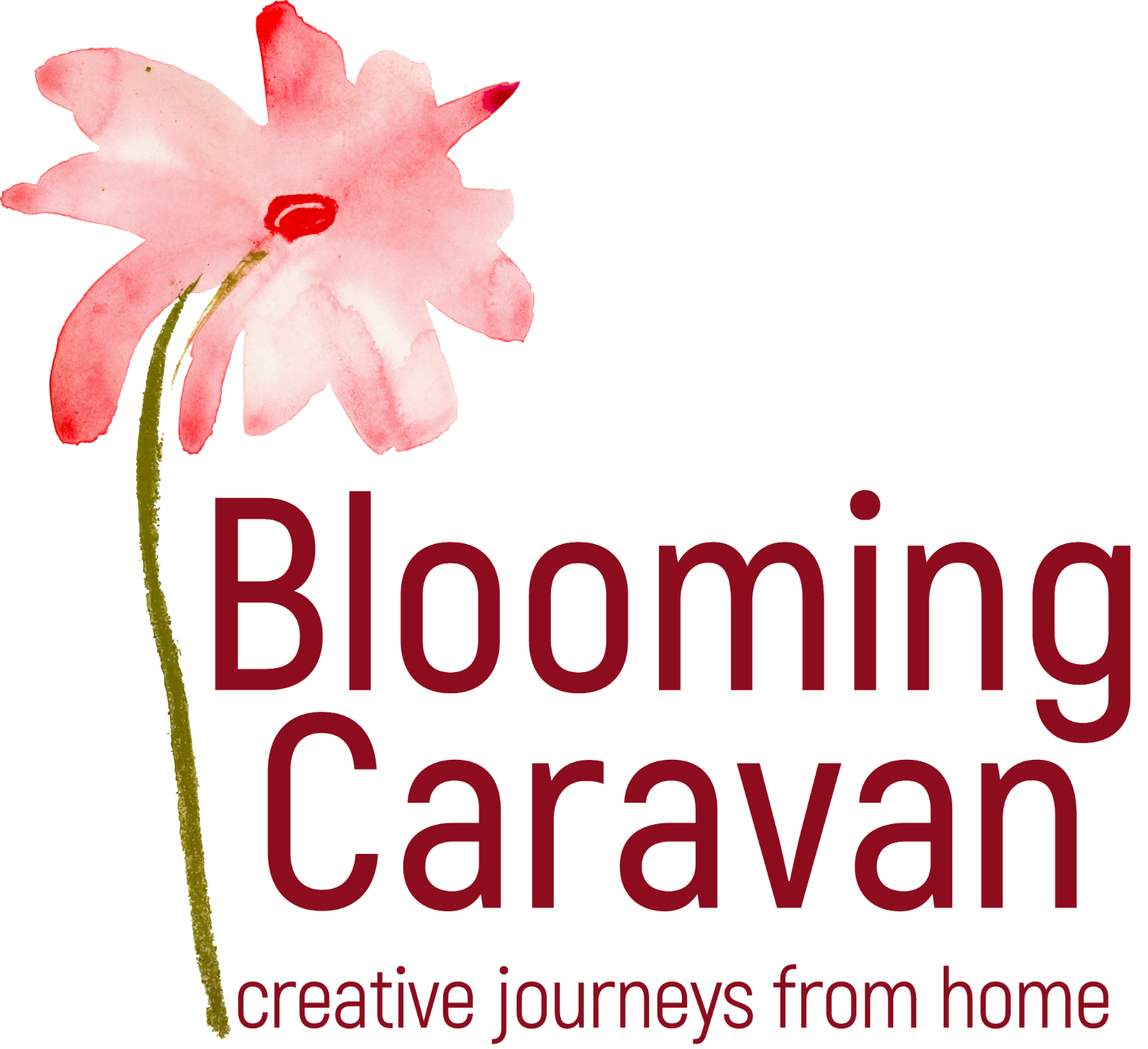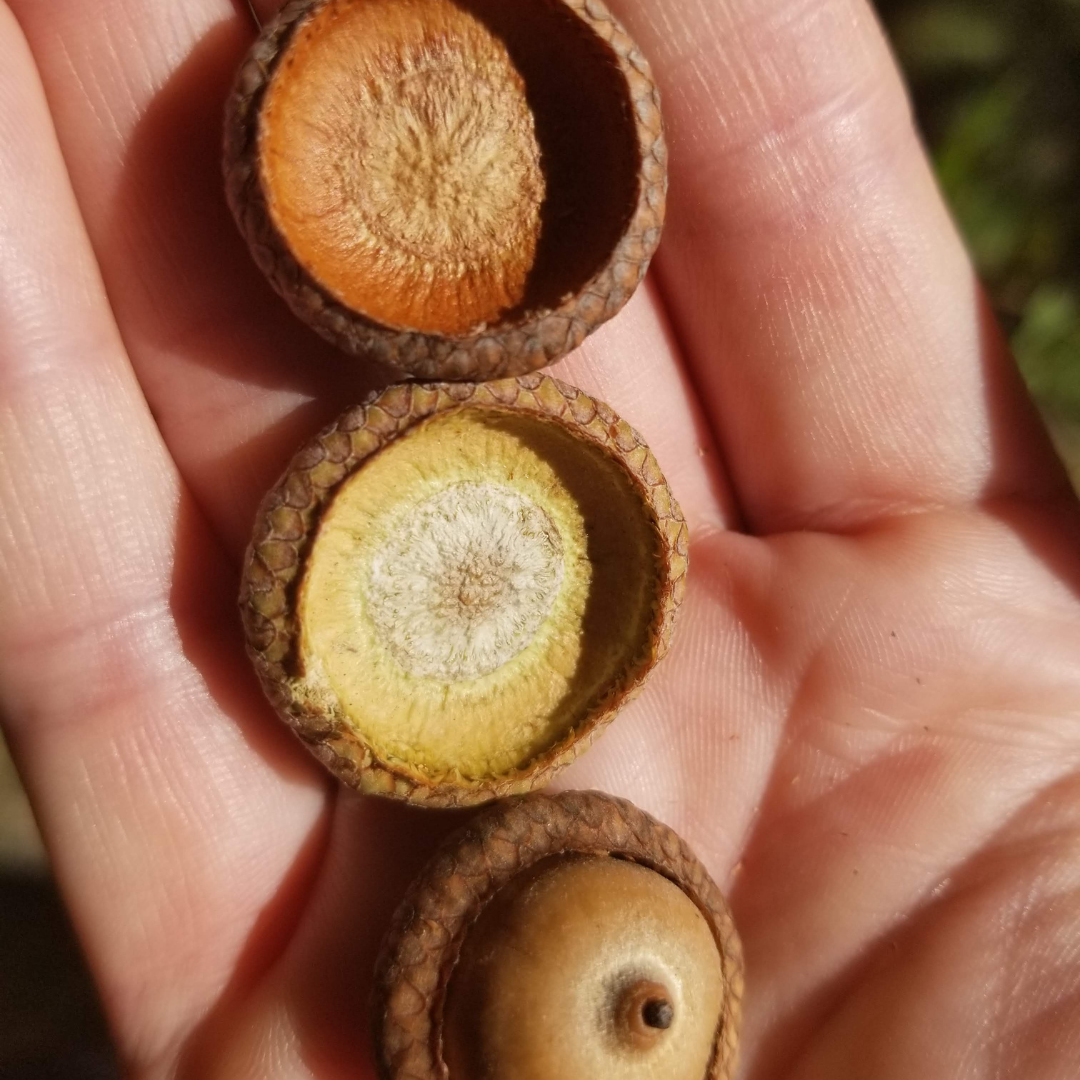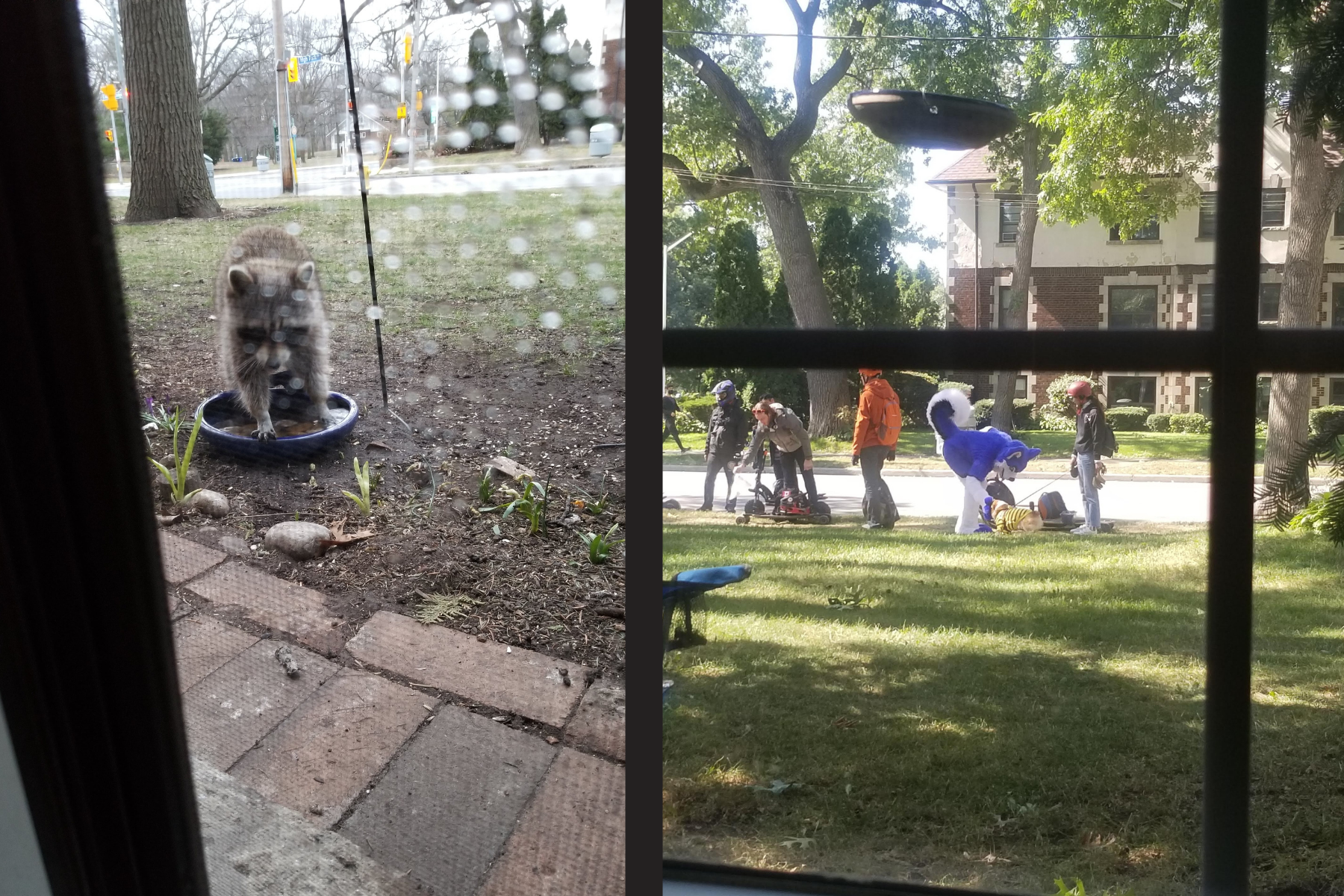Getting Grounded Online
Next time you find yourself outside, look for an object that feels good to hold in your hand.
What Nature Connection Has Taught Me About Virtual Connections
I’m sitting at my desk, in my cozy living room, tuning into a webinar on Zoom. Despite my trepidation toward indoor nature programming, I am feeling pretty good. Here I am, in the comfort of my own home, learning from an Indigenous Elder about water conservation practices in a distant watershed. The program, intended for youth leaders, is currently being made available to anyone who wants to participate. As I take in the pictures and hear the stories, I already feel inspired thinking about the local actions I can take. There’s something encouraging about being able to gather with like-minded people from places near and far.
Just as I start daydreaming about how remarkable this all is, my dog starts pawing my leg for attention, and I notice a strange noise coming from outside. Although it’s the middle of the day, the sky is now dark and the streetlights have come on. I’ve been so engrossed in the webinar that I failed to notice this dramatic change from the clear blue skies a short while ago.
I am now hearing thunder and seeing lightning, and it’s quickly drawing closer. All of sudden, the rain is pouring down in heavy sheets, so much so that I’m almost expecting Noah’s ark to float by, but instead I see a giant oak tree fall and smash a car parked across the street from my building.
The storm’s light and sound show is so intense and disorienting that I briefly consider returning to the safety of my computer and pretending it isn’t happening. In the background, I hear the faint voice of the webinar instructor encouraging us to listen to the water if we want to protect it. As I return my gaze to the screen, I see that the voice is surrounded by a celestial virtual background. The other participants look like a bunch of bopping heads on the screen. Is this what an out-of-body experience feels like? I wonder. Not exactly what I had expected from an afternoon of environmental conservation.
As someone who facilitates nature and gardening programs for a living, I have had to seriously start thinking about what I can use from my toolkit to feel less distant from clients, friends, and family while having to connect with them virtually. Back when I was doing in-person programming all day, I never would have missed a thunderstorm or encountered so much disembodiment. But with my work life and even “life” life mostly restricted to a computer screen, I’ve discovered how to use my skills in a new way.
Here are two simple tips you might try:
1. Don’t just get up, look out!
We’ve all heard how important it is not to sit for too long at the computer, and perhaps you have a practice of getting up every 30 minutes. But what do you do when you get up? I often find myself going from one screen to the next as I take the opportunity to check my cell phone. While I’m not here to give you a lecture about screen time, I will invite you to spend two minutes looking out your window before you sit down, just noticing if anything catches your eye since you last had a chance to look outside. When I look out my window, it doesn’t matter if I see the trees, the bus rolling by, or people on the sidewalk, it immediately makes me feel like a part of something larger than myself, beyond the confines of my apartment. Don’t worry if you don’t have a beautiful view and instead look onto a brick wall. There is likely something out there to broaden your perspective.
If you don’t have access to a window, move your gaze to something natural or made of natural material in your indoor environment. Maybe you have a plant or a piece of fruit on the kitchen counter. It could even be a wooden door, drywall, or a glass—think about what these things are actually made of. While looking at your selected object, briefly consider the journey taken by this item to get to where it is now.
If you try either of these suggestions right before jumping onto a phone call or joining a virtual meeting, notice whether you and your connection with others feels any different. Even though you are momentarily focusing on your own space, you might find yourself feeling more present while talking to others. I would also suggest using this technique at the start of your calls by asking others what they are seeing out their windows or sharing what you just noticed. It doesn’t have to take a long time. It’s amazing how sharing this information can create a necessary point of connection as the session gets started.
As we compare current differences or similarities in our locations, perhaps in the weather or the state of plant growth, we see each other as experiencing individuals versus the floating heads on our screens. Being able to visualize where other callers are located can also help to strengthen feelings of connection. We may be physically distanced, but we are all on the same Earth.
You never know what you’ll see until you take a moment to look out your window.
2. Hold onto a small piece of nature
I often keep an acorn or a pinecone in my pocket and clutch it when I’m feeling a bit anxious and needing some comfort. Perhaps you’ve felt a similar reassurance by having a talking stick to hold onto when it’s your turn to speak at a meeting. Next time you find yourself feeling rushed before joining a virtual call and distracted at the beginning, find out whether it supports you to hold onto an object. I really like keeping a natural object next to my desk specifically for this purpose, such as a rock or an interesting piece of bark, but I have also used an eraser in a pinch. I recommend finding something that feels good in your hand. Having a grounding object not only helps me focus, it also makes me more attentive to whoever I’m talking to.
If you find this technique helpful, you might even consider trying a short grounding visualization before virtual activities. I offer free instructions on the blog for a meditation that begins with imagining that you are holding an acorn in the palm of your hand. I invite you to try it.
This article originally appeared in the Fall 2020 Newsletter of the Gaucher Community Alliance, a rare disease patient support organization that I am proud to be part of.


